Interview and Story for the Finnish American Reporter by Mark Munger
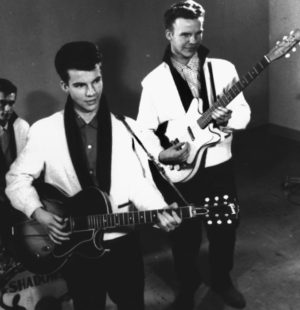
Four years ago, I was a featured author at the Høstfest in Minot, North Dakota by virtue of my Finnish American novels. I stayed my nights in a tent at the RoughRider Campground outside of town and spent my days selling signed books to Norwegians. During the festival, a dapper young man stopped by to see me, said he was of Finnish descent, that he was Jeff Vee—the son of Rockabilly Hall of Fame musician, Bobby Vee, was the drummer with the Nelsons (Ricky Nelson’s sons and Høstfest headliners), was on break, and that he’d be back to buy my books. When folks walk away promising they’ll be back, it’s about a fifty-fifty shot whether they return. But Jeff was as good as his word. After he read my books, he messaged me on FaceBook, applauding my effort to capture the Finnish American immigrant story. That connection began a friendship, which has included Jeff and his family stopping by to see me at other events, Finnish and non-Finnish themed, to chat and check in and buy a book or two. It’s been a two-way street: I’ve bought a number of Bobby Vee recordings and brought a group of Duluthians to see Jeff and his family band, The Killer Vees, play his father’s hits at the stunning Paramount Theater in St. Cloud, Minnesota. After the show, Jeff and his brother Tommy invited my wife and I and our friends to tour the recording studio founded by Bobby Vee and his sons in nearby St. Joseph. That’s where the idea of writing an article for FAR concerning the life and legacy of Finnish American musician, Robert Thomas Velline (Bobby Vee) first popped into my head. Bobby’s sons thought the idea was marvelous: Jeff and Tommy and I originally planned for me to come to St. Joseph, buy them lunch, and do an in-person interview. The pandemic changed that. What you will read, are my written questions and Jeff Velline’s written answers via the internet.
MM: For the readers of FAR, can you explain the link between your dad, Robert Thomas Velline (Bobby Vee) and Finnish ancestry? What’s the derivation of the Velline surname?
JV: Dad’s maternal grandfather, Matti Tampanila came from Finland as a boy in 1900. Matti’s father, Jacob, had already established a homestead at Perth, ND, having immigrated from Pyhajarvi, Oulanni, in central Finland. The farm is still in the family. It consists of 5,000 acres farmed by relatives, including Matti’s 93 year old nephew—Art Tuomala and his sons. In 1906, Matti married Emma Simonson, whose father Henry had come from the same region, and they homesteaded near Dunblane, Saskatchewan, Canada where my paternal grandmother, Saima Tampanila, was born. Saima was 100% Finnish. Dad’s paternal grandfather, Christ Velline immigrated from Balestrand, Norway, in 1892. He settled near Lisbon, ND. The farm in Norway had been split up under two family names, Sjotun (the original name) and later Vellene. The immigrants chose to take the Vellene name changing it to Velline as they felt it sounded more American. I recently visited Balestrand with my own family and the farm is still known as “The Vellene” farm. Early in his musical career, Dad was often lumped in with the Philadelphia “Bobbys”— Rydell and Darin. Many fans thought “Velline” was Italian and Dad was often asked to perform at Italian festivals. He accepted such invites but was always clear: “We’ll play the festival, but, make sure they know I’m Finnish Norwegian!”
MM: Sounds like the Velline household was a house of music given Sydney, your paternal grandfather, was a musician. Did your dad ever talk about his early influences in music and if so, what were they? How about your paternal grandmother’s Finnish roots and any musical heritage?
JV: There was definitely music in Dad’s house when he was growing up. No TV, only radio. Grandpa played fiddle, Grandma sang, and the boys learned horns and guitar: Dad’s older brother taught him his first chords on an old Harmony guitar they shared. On Grandma Saima’s side, extended family kept Finnish folk traditions alive by playing the old country’s music on mandolins and guitars. We’re lucky to have some very rough cassette recordings of some of this. Mom—Karen Ann Bergen—was from Detroit Lakes, MN, where she met my Dad at a dance where he was performing with his band, The Shadows. They were both just 16, married four years later, and celebrated their 51st anniversary in 2014, shortly before Mom passed. Mom’s heritage is German and French Canadian.
Dad’s other early musical influence was KFGO Radio in Fargo. He loved Hank Williams and The Louvin Bothers. He said that the first time he heard Elvis sing “That’s Alright Mama” on that same station, Man, country music is really getting good! He was a fan of early rock and roll; Buddy Holly, The Everly’s, Gene Vincent, Little Richard, Eddie Cochran and the like. The Shadows’ records and a 1962 album called “Bobby Vee Meets The Crickets” reflect these influences.
MM: I think I read somewhere there was a connection between your dad’s Finnish ancestry and Minnesota …
JV: Dad’s Great Grandpa Jacob came over from Finland with his brother Matt. Matt settled in Duluth and ran a public sauna on the weekends. One of his sons, Urho, settled in Finlayson, MN.
When my Grandma Saima was 5 years old, her mother passed away (ironically from the 1918 Influenza Pandemic). The oldest son Henry remained in Canada while the three young ones were sent to Perth, ND to be raised by family. Five children were lost at young ages due to illness or accidents. The immigrant life and homesteading was very hard. The older son, Henry (Dad’s uncle), worked in the lumber industry near Thunder Bay, Ontario where he died fighting a forest fire.
Grandma Saima was raised by her grandmother in Perth, ND and later by her Aunt Minnie who married Bill Tuomala, who also came from central Finland. He had extended family that settled in the Ely area (August Tuomala).
Christ Velline’s general store grew into a small chain that included a store in Fargo, which is where Christ and his wife, Christine, retired. Most of their children ended up staying in that area. Grandpa Sydney Velline met Grandma Saima Tampanila when he worked as a short order cook at a café in downtown Fargo.
MM: Did you dad talk about his Finnish ancestry growing up? If so, what was he take on it? Did he ever talk about Finnish sisu (what I translate as fortitude to the chagrin of Finns who say no one word can encompass the meaning!)? Seems, even if your dad didn’t talk about sisu, he certainly lived it.
JV: Given he found success as a musician and started a family at a young age, I don’t think Dad had a lot of time to explore family history when we were growing up. However, I took an interest in my Finnish heritage due to stories Grandma Saima told us as kids and stories Dad shared from his own childhood, and was particularly drawn to the “immigrant story.” They were tough Finns, those immigrants, endowed with sisu! Dad’s curiosity was piqued as he aged and reconnected with family near Perth. In the early 2000s, Dad and us performed at “Music on The Prairie” in the Perth town hall. While the gathering was organized by our Finnish relatives for the whole community, it was pretty much a family reunion. In 2010, Dad and my family took a trip to visit the old homestead in Saskatchewan where Saima was born. We placed flowers on graves at the Finnish Cemetery and “walked where they walked.” We considered making a trip to Finland and Norway with Dad but a year later, he was diagnosed with Alzheimer’s Disease. He passed away from the disease on October 25th, 2016.
My wife Cindy, daughter Saima (named after Grandma of course) and I finally made Dad’s dream a reality in June of 2019, visiting both Finland and Norway. We were able to visit the original Velline farm and meet some distant cousins who we remain in touch with. In Finland, we visited the cemetery and honored my Finnish ancestors. Our favorite city was Helsinki because of the people, the pace, and the beauty. We also visited Savonlina where we stayed at “The Saima Hotel” and jumped into Lake Saimaa in honor of my grandmother and my daughter! The town and its people were a highlight of the trip. My personal appreciation for nature, the north country, and saunas made it feel like I had a genetic connection to the place. With everything going on in this world right now, we just might emigrate back!
Dad never referred to sisu. However, there was no doubt he embodied the concept of grit, determination, grace, and simply put: “Doing the right thing.” He came from a poor background, bought his parents a house when he was just 18, and had a career making music spanning over 50 years. In a business where many of his contemporaries didn’t survive, Dad had 38 chart hits, 6 gold records, and fans around the world he never took for granted. We referred to him as an “ambassador of joy”: He (and later, we) went from town to town leaving smiles, memories, and stories through music. He was the last person to leave a venue: He took time for everyone who wanted a handshake, an autograph, or conversation. He looked each person in the eye and gave the people his complete attention: Something that inspires me to this day. So while Dad didn’t use the term, he possessed an internal compass I could never figure out. Maybe that was his innate, Finnish sisu!
MM: Bobby ended up filling in for Buddy Holly, The Big Bopper, and Richie Valens after their plane crashed in Iowa. Give the readers a quick rendition of how your dad was selected to take the stage on that long ago night in Fargo and what followed …
JV: In late 1958 and early ’59 Dad had been mostly been a spectator as his older brother Bill and buddies jammed in the garage until it became apparent none of the others could sing lead. On Feb 3, 1959, the word spread thru Dad’s high school that Buddy Holly, Ritchie Valens and The Big Bopper had been killed in a plane crash on the way to a show at The Moorhead Armory. Dad and his friends had tickets for the show and DJ, Charlie Boone put out a plea for local bands to “come on down” and play. Dion & The Belmonts, Frankie Sardo and the “new” Crickets (including Waylon Jennings) arrived by bus. “The Shadows”—as they named themselves just before going onstage—opened the show. It was their first gig. Dad was 15 years old and had been playing guitar and singing for only a few months.
Dad’s recollection of the night is that things started out like a “rock and roll wake”. The musicians who’d been touring with the guys who died were in a daze. Fans in the audience learned the news when they arrived for the show. The Shadows performed twenty minutes of tunes by Gene Vincent, Little Richard, and The Everly Brothers and was called back for an encore, where the band—having run out of songs—had to repeat tunes already played. A local promoter took the band under his wing and began booking them for school dances and “platter parties” at drive-ins. A few months later, he lined up a recording session for the boys at Kay Bank studios in Minneapolis where they cut four songs including “Suzy Baby” penned by Dad. With vinyl in hand, the band got into a ’48 Ford and hit every radio station within 250 miles. Within weeks, “Suzie Baby” went to number one in the upper Midwest.
MM: Did your dad ever perform in Finland? I know he was a huge presence in Great Britain, winning his only gold album (I think) for The Bobby Vee Singles Album in 1980. Talk a bit about his experiences in the UK. Did you and or any of your musical siblings get to tour with your dad in Europe? What can you recall were the highlights of any European visits?
JV: Dad made a few appearances across the Scandinavian countries but never performed in Finland. He toured the UK many times during his career. We went to the UK with Dad at the end of the 1985 “Regal Rockin’ Blues Reunion Tour.” It was Dad’s first trip back to the UK in years. The tour featured Dad, Del Shannon, Bo Diddley, Frankie Ford, The Marvelettes and was headlined by Ricky Nelson, who was killed in a plane crash a month or so later. Years later, my brother Tommy and I went on to play many shows (and a PBS special) with Ricky’s sons, Mathew and Gunnar Nelson.
We made about twenty trips to the UK as a family, playing some of the most beautiful theaters anywhere including Birmingham Symphony Hall, Glasgow Royal Music Hall and The London Palladium. Sir Andrew Lloyd Webber and Sir Tim Rice were big fans of Dad’s music and attended his shows. In 1998, Sir Andrew hired us to play his big 50th Birthday Bash. That same year, we were part of an event produced by Sir Paul McCartney celebrating the music of Buddy Holly. Probably the single biggest career highlight for all of us was when Paul joined us, The Crickets, and Carl Perkins for an epic version of “Rave On!”
Dad referred to the UK as his “second home”. We were also privileged to tour with Dad in greater Europe, Asia, and across Australia. Dad always called early American rock and roll an “international language.”
MM: Talk a little about your dad’s musical career. He really, at least to my mind, made his mark with some pop standards, “Devil or Angel”, “Rubber Ball”. “Take Good Care of My Baby”, and others; all gold singles but all mostly from the early ’60s. Yet he continued making music until his death from Alzheimer’s in 2016. Talk a bit about his work after becoming a star in the early days of rock and roll.
JV: Dad was thrust into the music business at 15. The only other job he ever had was a paper route. He was fortunate to end up with a label less corrupt than others, a great producer (Snuffy Garett), and a protective manager but I’m quite sure it was Mom who kept him on track; as she did for all of us.
Most of Dad’s hits came early on. When the “British Invasion” arrived (1964), Dad felt his hit-making days were over but he had his biggest selling record (“Come Back When You Grow Up Girl”) which made it to #2 on the charts in 1967. Even so, by the early ‘70s his record company had lost interest, trends had changed, and he was no longer a “teen idol”; something he never wanted to be. Liberty Records owed him one more album. With no support from the label, Dad went into the studio to record an album under his real name, Robert Thomas Velline with the Five Man Electrical Band. Nothing Like A Sunny Day was critically acclaimed but, lacking support from Liberty, it came and went without fanfare. In Dad’s view, that album was as important as anything he ever recorded. For the rest of us, it’s our favorite album of Dad’s career.
The lack of chart success began a process of slow disengagement from LA, culminating in the family’s return to the Midwest. By the early ‘80s there was a resurgence of interest in ‘60s pop/rock that allowed Dad and us to tour nationally and internationally. Dad retired from performing on July 3, 2011 in front of 20,000 people at an annual fund-raising event we had started in 2006 called Joetown Rocks.
MM: How many of Bobby’s children followed in his footsteps and became professional musicians? Talk a bit about the formation of Rockhouse Productions and how you, your dad, and your brother Tommy became involved in opening a studio.
JV: The four Velline siblings grew up in a house surrounded by music, musicians, and instruments. Dad often recorded demos late into the night on his 4-track reel to reel. The three boys jumped from one instrument to the next until we settled on one. With Robby on guitar, Tommy on Bass and myself on Drums, we later backed Dad and other iconic ‘60s artists. Jennifer is an artist and designer who’s responsible for our promotional materials and CD artwork.
Regarding Rockhouse Productions, I took an interest in the technical side of recording and production and studied audio engineering with the thought of helping Dad build a home studio. He did have a home studio but in 2000, Tommy and I bought a historic bank building in St. Joseph, MN and retrofitted it as a professional recording space. Rockhouse is now home base for touring, rehearsals, booking, and event production, which is much of what we do. The place is a bit of a museum and when there’s no pandemic, the door is always open to visitors; no charge!
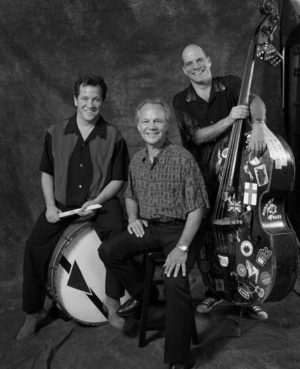
MM: You dad worked with Bob Dylan, James Burton, Nanci Griffith, to name a few of the greats in the business. Talk a bit about his history and association with Dylan.
JV: In the summer of ’59 Robert Zimmerman detoured to Fargo on his way to the U of M in Minneapolis. He’d taken a job as busboy at The Red Apple Café. Uncle Bill met him at Sam’s Record Land. Robert introduced himself as Elston Gunnn– “with 3 n’s”, told Uncle Bill he’d just gotten off the road with Conway Twitty, and said he’d had heard The Shadows needed a piano player. “Elston” auditioned: He wowed the band with Jerry Lee riffs in the key of C. The band bought him a matching sweater, crammed him into that ’48 Ford, and they drove off to play a dance.
Turns out “Elston” could ONLY play piano in the key of C! Whenever the band was in a different key, he’d jump up next to Dad and sing backup. “He’d stand behind me and scream in my ear,” is the way Dad recalled it. After a few shows the band decided it wasn’t working out and they parted ways.
A few years later Dad was walking through Greenwich Village. In the window of a record shop he saw an album titled: BOB DYLAN. Dad’s take? “Man, that looks a lot like Elston Gunnn!”
In Chronicles, Dylan wrote that “Bobby had a voice like a silver bell,” and “he was like a brother to me,” which touched Dad deeply. When Dylan played Midway Stadium in 2013, Dad—already dealing with Alzheimer’s—watched from the side of the stage. Dylan, who rarely speaks during concerts, called Dad “one of the most beautiful people he’d ever been on stage with …” Then he covered “Suzy Baby,” a song they would’ve played together at those teen dances. That moment meant more to Dad than any award or accolade he ever received.
MM: I’d like to focus on two albums your dad completed later in his career. The first one is I Wouldn’t Change a Thing, which was released in 2003. Talk a bit about how that record came to be.
JV: I Wouldn’t Change A Thing is an album we’re all proud of. We’d just finished the studio, were touring regularly, and were mostly tracking other artists work. Sir Tim Rice (Jesus Christ Superstar, Evita, Lion King, etc.) dropped by the studio for a visit: He was in Minneapolis for the opening of his latest production, Aida. At my parents’ house, Tim and Dad reminisced about the “old days”. The talk turned to The Crickets and Tim blurted out: “Whatever happened to Peggy Sue?” Dad replied: “That sounds like a song!” A few weeks later, a lyric showed up in an email from Tim. We took the words, went into the studio to write the music, and finished the song in short order. Eager to release “Whatever Happened to Peggy Sue,” we felt like we needed more than a single. I suggested we go the studio one night a week and just make music. So the “Tuesday Night Club” was born. We had no illusions about success; no timelines. The album came together organically, note by note. It was as much about the journey as the destination.
We wrote some tunes and others, we stumbled onto. A few are reworkings of earlier hits. Two of my Dad’s best friends in the business were Del Shannon (“Runaway”) and Brian Hyland (“Sealed With A Kiss”). Two of my favorite tracks on the album are “Cry Myself To Sleep” and “That’s The Way Love Is”; obscure singles penned by Shannon and reworked by his buddies—Dad and Brian Hyland—in Del’s honor.
In 1963, Dad released a song penned by Sonny Curtis of The Crickets. Though “How To Make A Farewell,” did not chart, it was a personal favorite of Dad’s. A gospel/ballad version of that song morphed out of those Tuesday sessions. On the album, it features folk singer/songwriter Nanci Griffith (a friend from Lubbock, Texas, who fancies herself an honorary Cricket) on main harmony.
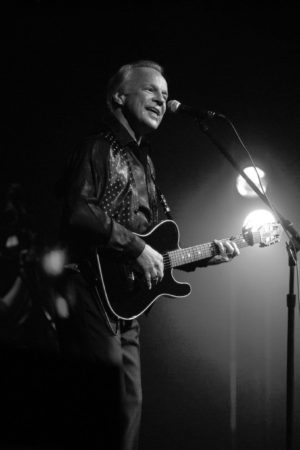
MM: The second album I’d like to get some feedback on is The Adobe Sessions. Maybe talk a bit about the trials and tribulations of working with Bobby on the album after his diagnosis with Alzheimer’s.
JV: Our approach to The Adobe Sessions was similar to I Wouldn’t Change A Thing, though circumstances made things more urgent and challenging. In early January 2011, Dad was diagnosed with Alzheimer’s Disease. Everyone in the family dropped what they were doing, circled the wagons, and road-tripped to Tucson, AZ where our folks had just finished building a retirement home. I tossed portable recording equipment into the RV before we left and set up in the garage of their new adobe home after we arrived.
In an effort to spend valuable time, support our father, and fight back against the reality of the disease, we made whatever music felt good; live and with minimal technology just like Dad did in the garage of his youth. We cut old songs from past campfires, lyrics that resonated, and melodies that made us feel good inside. We had no end game; it was about the process and being together to help Dad make music.
“If I Needed You” was the very first track we cut. On it, you hear Dad doing his own harmonies as he did in the early days. We just kept cutting tunes from there; night after night. The next track we cut, “The Man In Me,” resonated for all of us lyrically—and in tempo and melody as we gave it some twists. Dad sang it during his “club” shows in the ‘70s. We have fond memories of hearing it as kids and even better, it was written by Elston Gunnn!
Most of the tracks were cut or started that first week. Then we chipped away for about a year, adding a few things here and there. The last track added is, I think, the most dynamic and cathartic song on the album. “The Maker” started in Tucson and was finished as a collaboration with monks at St. John’s Abbey in Collegeville, MN.
In the end, the album’s a family scrapbook of musical memories that, though very personal, has been embraced by fans for the sweet and honest work that it is.
MM: It’s hard to point to marital success amongst the famous. How were your parents able to keep a family together?
JV: Our parents dealt with the same issues any marriage does: They just never gave up. They worked at it. Touring was hard on all of us, especially on our mother, being in her twenties and raising four young children. But when Dad was home, he was 100% with us. Also, Mom finished college and graduate school and pursued her own career as a social worker and therapist. She was a strong and driven woman who impacted many. They were a good team. One of my fondest memories of our parents was watching them in their last years, both of them dealing with terminal illnesses, holding hands and going for walks, making the most of each moment.
MM: Talk a bit about you and Tommy’s efforts to keep Bobby Vee’s music alive.
JV: As much as we try to keep the music alive, we try to keep our parents’ spirit of giving back to the community and to the arts in mind with everything we do.
A few years ago, we produced a show called Remembering Bobby Vee starring The Killer Vees. The musicians included folks who played with Dad over the years; family, me, Tommy, Tommy’s son Bennett, our cousin Matt, and others. “We’re like a bunch of hillbillies,” Dad used to say. That show includes a string section, female background singers, and some phenomenal video footage. Today, we only take it out periodically.
It’s the musical play Teen Idol: The Bobby Vee Story that we’re most proud of. Collaborating with local playwright Bob Beverage and The Minnesota History Theater, we spent several years interviewing people and developing the storyline. The play premiered in the fall of 2016 playing to packed houses and receiving rave reviews. We lost our father during the last week of the production, making the play’s success a bittersweet tribute.
Not only does it tell Dad’s story and our family’s story: It’s a love story and a theatrical ride through an exciting yet volatile time in America. It’s my hope the show will continue to entertain and inspire across the country and the world; perhaps one day debuting in Finland!
MM: Explain your family’s connection to charitable works, like Joetown Rocks held in St. Joseph, Minnesota where the studio is located. Seems that your family has a close connection to the Catholic faith. Explain where that connection comes from and how it’s molded your view of helping out your fellow man and woman. Were Catholic charitable values something instilled in the Velline kids by your parents?
JV: Dad was nominally a Lutheran. That wasn’t gonna fly with Mom’s family so he converted. The Catholic faith was a factor in our upbringing, but more in a ‘70s-California-hippy-acoustic-guitar-peace-and-love sort of way. Still: Broad, Catholic values kept all of us kids in Catholic school growing up. After we moved to Minnesota and enrolled in Catholic schools here, our parents were asked to get involved with fund-raising, bake sales, and to help out painting the band room; things like that. That’s when my parents suggested: “How about a concert?”.
We called it Rock Around The Clock and included daytime carnival for kids, a raffle, a concert; the whole shooting match. Over twenty-four years the event raised over two million dollars (for the school). It became a tradition and created memories for many. Artists who were featured included Dad (and us kids), Dick Clark, Del Shannon, The Crickets, The Coasters, Little Eva, Tommy Roe, Ben E. King, The Shirelles, The Chiffons, Brian Hyland, Frankie Avalon, Johnny Rivers, The Three Dog Night, Herman’s Hermits, Paul Revere And The Raiders, Mary Wilson’s Supremes, Little Richard, and many others.
My folks were strong on community and values, though not necessarily Catholic-driven. They were liberal and open-minded; treating people the way they wanted to be treated. They sought to give something back, to support youth and the arts, and most of all, to bring people together.
Two years after we wound down Rock Around The Clock we started Joetown Rocks since St. Joseph and Collegeville, MN, had become our stomping grounds. Meant to be first and foremost a community event, it was a parish festival on steroids. The first year we set up for 3-5,000 people: We drew 10,000. Dad played his last public show as part of JoeTown Rocks in front of an audience of 20,000 on July 3, 2011.
Even after our parents’ passing, Tommy and I’ve kept the event alive: It continues to grow. In 2016 we started another event, Rock 4 Alzheimer’s, to raise funds and awareness about the disease as well as fund scholarships for youth arts and music programs throughout Central Minnesota.
MM: Looking at your dad’s lengthy, successful career in music what do you think Bobby Vee’s legacy is?
JV: Dad received a fan letter a few years before he got sick. The sender wrote of an encounter with Dad when the fan was a young immigrant shining shoes on the streets of NYC in the early ‘60s. Upon learning whose shoes he was shining, the immigrant told Dad he was a huge fan of Dad’s music; that he and his brother played “Rubber Ball” over and over on their little turntable. Dad promised to return with an autographed album, but for whatever reason, didn’t make it back. Fifty years later, not only did Dad send the guy a CD; he dug out a brand-new vinyl L.P., signed it and sent it along with a letter of gratitude.
Dad took no thing and nobody for granted. He seemed to remember everyone he ever met, every DJ that ever spun his records, and every song he ever heard. He hung out with Elvis, performed with The Stones and the Beatles, played with Dylan and sold millions of records. He will surely be remembered for his music. However, I think the person and the father he was are his greatest legacies.
MM: Where can interested readers of FAR find and purchase Bobby Vee’s music and find out more about this amazing Finnish American?
JV: It’s best to go to the usual places: iTunes, Spotify, Siri, Alexa, etc … I can be reached at info@rockhousepro.com and would be happy to answer questions or chat with any Finn so inclined. We can “Zoom” now, too!
MM: What question haven’t I asked that readers of FAR might want answered?
JV: Like anyone who is not a Native American, the Vellines are here because of family who came before us: Immigrants who did what they did, struggled, and survived. It’s important to know your heritage and express gratitude for your ancestors. I also think that those long-ago immigrant Finns and Norwegians deserve some credit for the joy Dad gifted the world through his music.
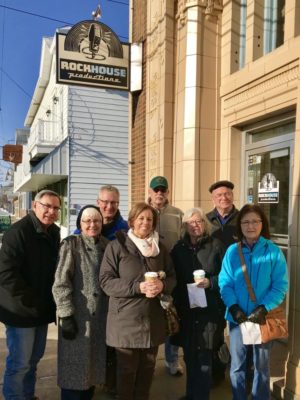
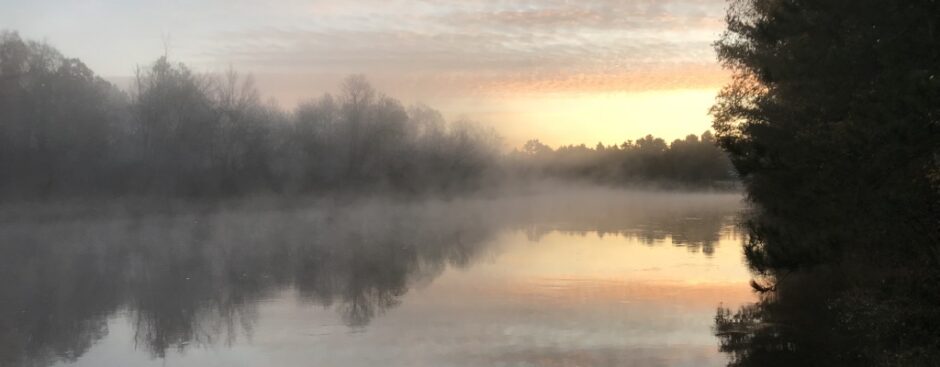


Absolutely fascinating and informative interview. Love it.
Thanks for reading. If you’re a reader, check out my books under the “Buy Books Direct” tab.
Awesome story
Thanks!